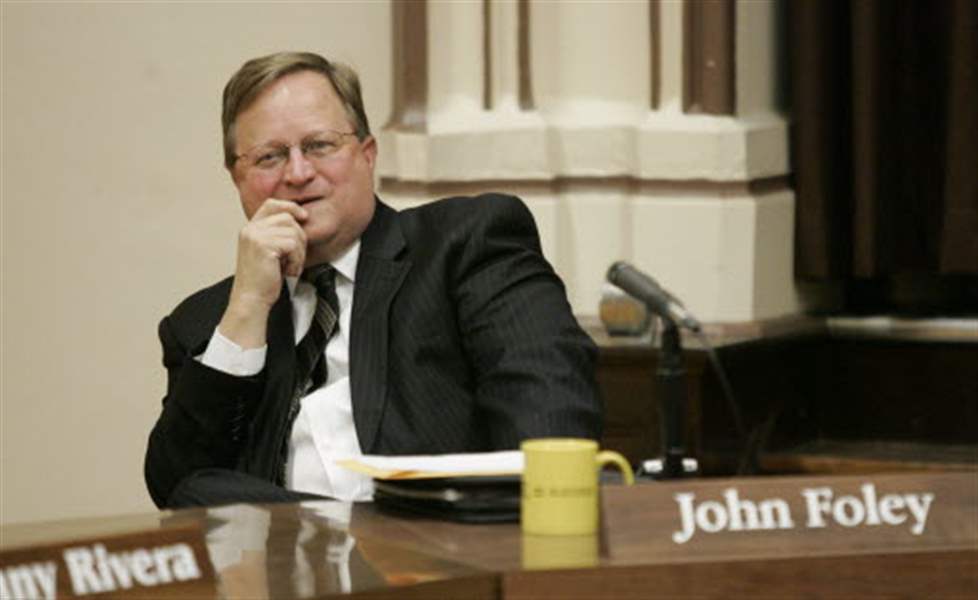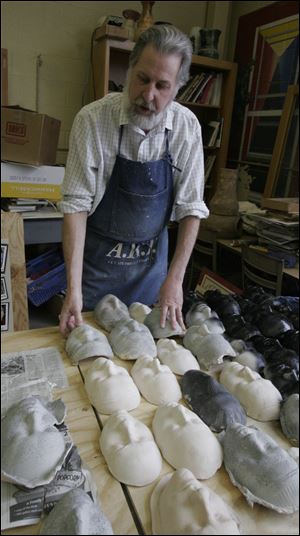
Plan to cut teachers draws flak; union: 'warped logic'
3/12/2010
Superintendent John Foley said no decisions have been made about what to cut to close the budget hole.
Eliminating all art, music, and physical education teaching positions in Toledo's public elementary schools would erase more than one-third of a projected $30 million budget hole for the school system next fiscal year, officials said yesterday.
But some teachers, parents, and union leaders say they'll resist the suggested change - citing personal experiences and studies that indicate early exposure to arts, music, and physical education aids student achievement and attention.
"It's warped logic," said Francine Lawrence, president of the Toledo Federation of Teachers. "It cuts right at the heart of education."
The budget crisis highlights what has become a long-running American debate over the relative importance of arts and other extracurricular activities to student development.
Superintendent John Foley stressed that if the cuts were approved, art, music, and gym wouldn't disappear from elementary school curricula - just the 147 teaching specialists. They are trained to teach specific subjects.
Mr. Foley said that regular elementary classroom teachers would incorporate the subjects into their instruction.
Under that scenario, the school day would be shortened by one-half hour, which is the state minimum, to give teachers planning time in the morning.
Superintendent Foley said no decisions have been made about what to cut to close the budget hole. The teaching positions are just part of a larger menu of possible cuts that total about $38 million in savings, he said.

Pat Palmer, who retired after 35 years teaching art in the system, says using specialists is the preferred method of instruction.
The list incudes other controversial suggestions - such as eliminating all sports teams, limiting bus service, cutting salaries and 176 other teaching positions, and adjusting health-insurance coverage.
School officials say the programs and teaching positions are all eligible to be eliminated because they're not mandated by the state as core educational requirements.
Voters will be asked May 4 to approve a 0.75 percent tax on earned income to raise about $18 million. The levy money might help save the 147 art, music, and physical education specialist teaching jobs and other threatened positions and programs that the Toledo Board of Education must analyze and winnow down.
Board President Bob Vasquez said he wants to wait and hear from the public about its priorities for cuts.
"I personally don't have a pecking order," he said.
A public hearing is scheduled for 5:30 p.m. Wednesday at Start High School and for the same time on Thursday at Rogers High School. The board is scheduled to vote on proposed cuts at its March 23 meeting.
Toledo Parent Congress President Chris Varwig said she believes the state law should be changed to mandate specialized art and music instruction in elementary schools.
She believes her 17-year-old daughter Caitlyn's early exposure to musical instruction at Beverly Elementary School helped develop her critical thinking skills and gave her confidence. At the time, the third grader won a school talent show after she performed a country song, Ms. Varwig said.
Caitlyn - now a junior at Bowsher High - plans to study musical theater in college and is playing Belle this year in Bowsher's production of Beauty and the Beast, Ms. Varwig said.
Retired Toledo art teacher Pat Palmer said that the current list of suggested cuts threatens student development and the reputation of the school system and city.
"What surprises me is that the Toledo community has always supported the arts. It's why you want to raise kids here," he said. "My fear is that the system is going to lose a lot of good kids."
Mr. Palmer, who retired from Bowsher in 2008 after 35 years teaching art in the school system, said employing specialists is the preferred method of instruction.
He said some elementary school instructors don't feel comfortable teaching fine arts or don't stress them as much as other teachers, creating unequal exposure among students.
He also believes that more parents will choose private schools or leave the district if specialized art and music instruction in elementary schools is cut.
"The school system needs it, and the kids need it as part of their growth," he said.
Mr. Palmer is credited with reviving the system in Toledo of using art and music specialists in elementary school instruction.
When he started his career in the mid-1970s, the programs and teachers were being cut as the school system reorganized. Over the ensuing two decades, Mr. Palmer and the teachers' union negotiated increases for more specialists.
It began in the early 1980s when he and just two other art specialists wended their way over the school year to all of the 56 elementary schools that were in operation back then to give art instruction.
The regular teachers liked it because they would get a break and also have some free time for planning.
In Mr. Palmer's case, he chose to take blocks of clay he stored in his car and had to lug around from school to school. In the winter, he had to store them in his house so the clay wouldn't freeze. Over the course of the year, the students learned how to produce and glaze ceramics, he said.
When Mr. Palmer retired, the number of elementary schools in operation had decreased to 39, but the number of art, music, and physical education specialists stood at 147, he said.
"Once you start on that downward slide, I'm not sure how you get it back again."
Contact Christopher D. Kirkpatrick at:
ckirkpatrick@theblade.com
or 419-724-6134.